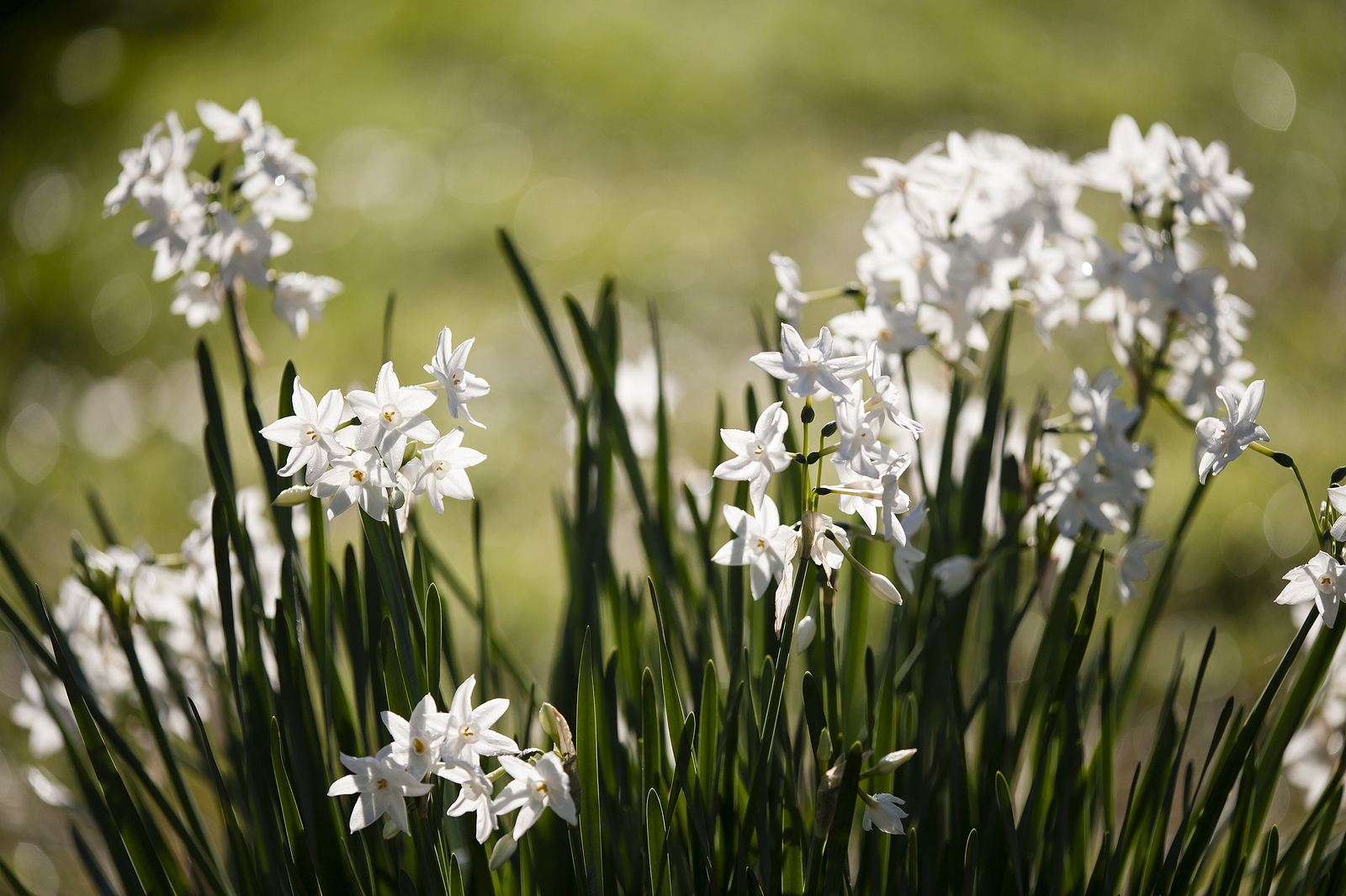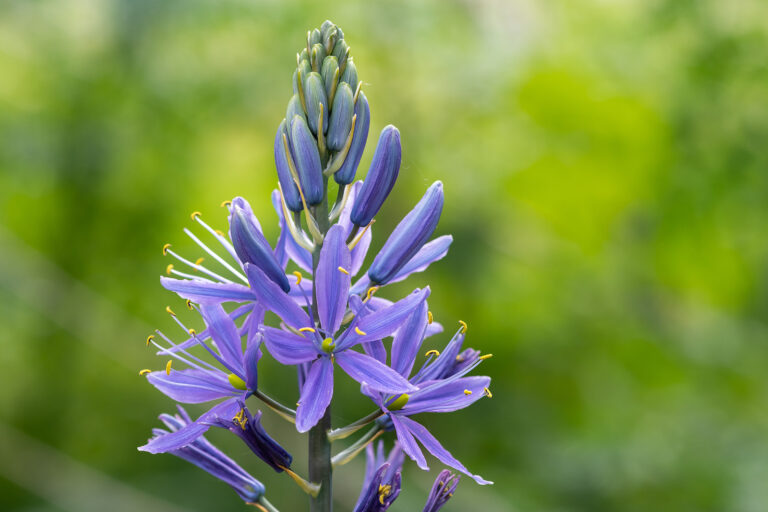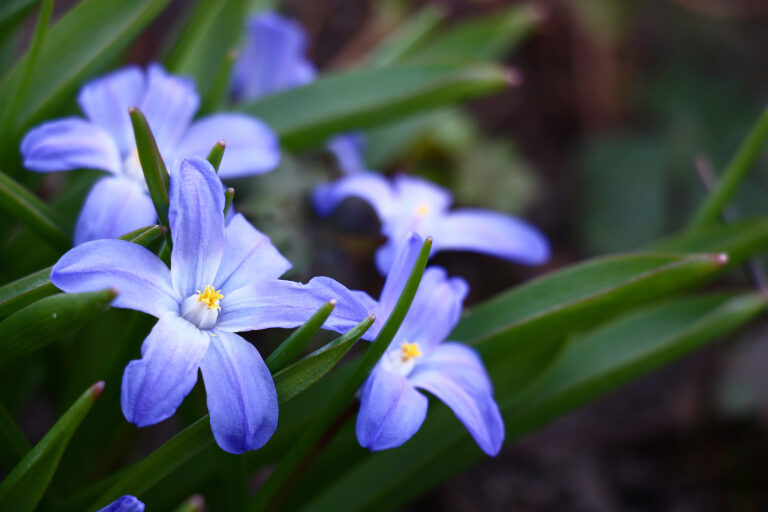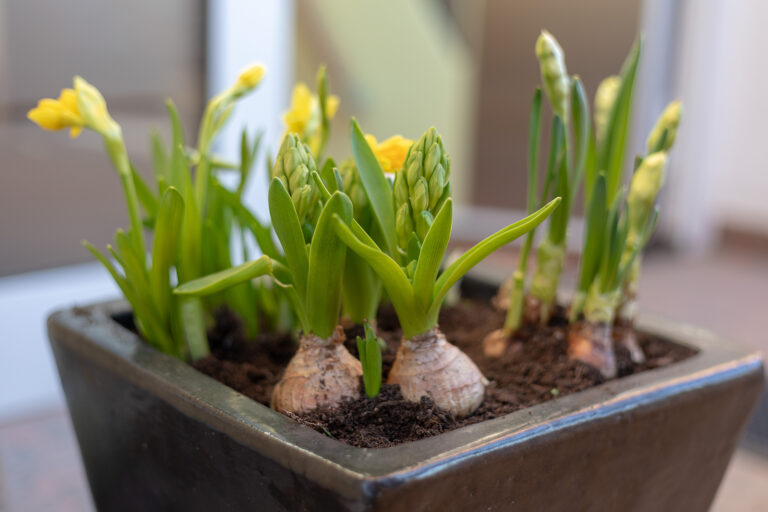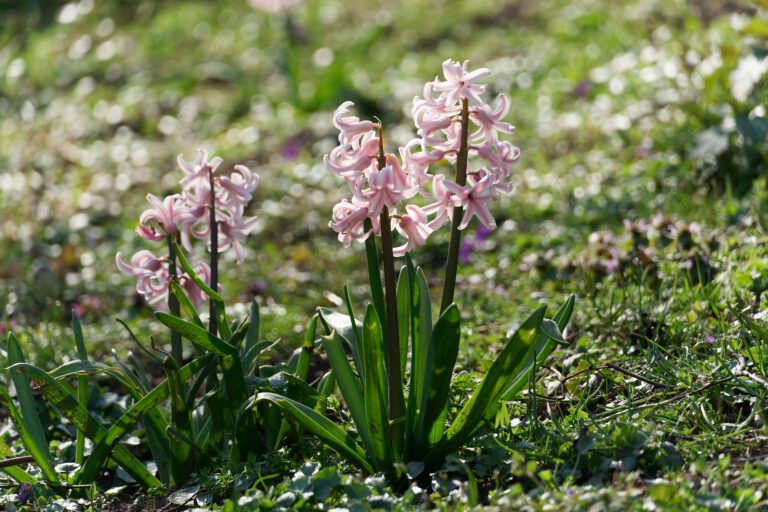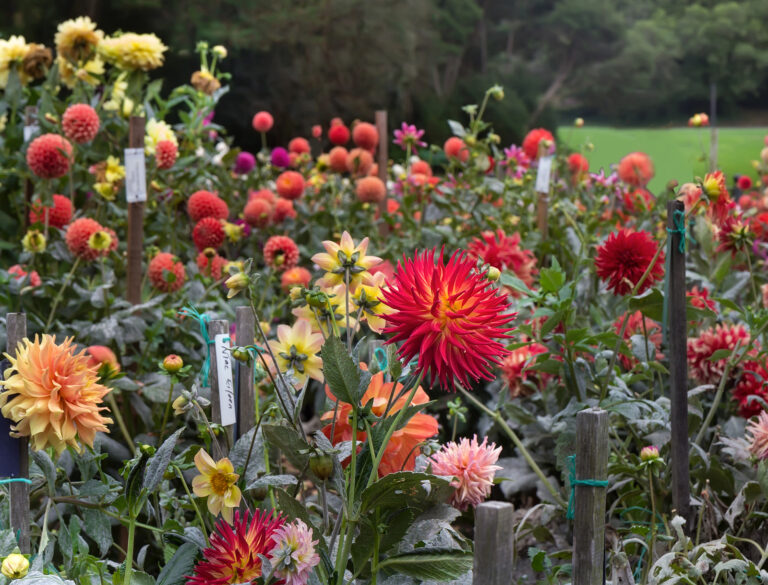Favorite Spring Flowering Bulbs
Some bulbs—and corms and tubers—are among the earliest flowers of the year. Snowdrops are the first flowers of the year. They are followed by Dutch crocuses and then large narcissus (daffodils). Hyacinths and Muscari and early tulips follow.
Spring bulbs can be divided into early spring, mid-spring, and late spring bloom times. Plantings of each will take the garden from late winter to the bloom time of spring and summer annuals and perennials.
Planting time: In cold winter regions, spring bulbs should be planted at least three weeks before the ground is expected to freeze; this will allow sufficient time for root development. In very cold regions, add a winter mulch after planting spring-blooming bulbs.
In warm winter regions where a winter freeze is unlikely, spring-flowering bulbs need not be planted until very late fall, especially where early to mid-autumn months are very warm or hot.
Buying tips: A bulb or corm or tuber should be firm, not shriveled, and free of soft spots. The largest bulbs and corms are the most expensive and generally produce the biggest flowers. Smaller bulbs are adequate in a year or two you will not know the difference in flower size.
Before planting, place bulbs in the bottom of the refrigerator, preferably in the vegetable crisper, in paper bags. The best storage temperature is 40℉. Bulbs will store for up to eight weeks or until the ground is cool enough for plants in late fall or in early winter.
Early spring flowering bulbs
These bulbs are hardy. Plant these bulbs in late summer or autumn. They can remain in the ground through winter.
 Crocus, Dutch crocus, spring flowering crocus (Crocus vernus). White, blue, mauve, yellow, or bronze flowers, some striped with contrasting colors. Grow 4 to 5 inches tall and 4 inches wide. Plant in full sun in average garden soil. Plant 3 inches deep. Plant under trees or shrubs, in front of beds or borders, and naturalized in lawns. Zones 3-8.
Crocus, Dutch crocus, spring flowering crocus (Crocus vernus). White, blue, mauve, yellow, or bronze flowers, some striped with contrasting colors. Grow 4 to 5 inches tall and 4 inches wide. Plant in full sun in average garden soil. Plant 3 inches deep. Plant under trees or shrubs, in front of beds or borders, and naturalized in lawns. Zones 3-8.
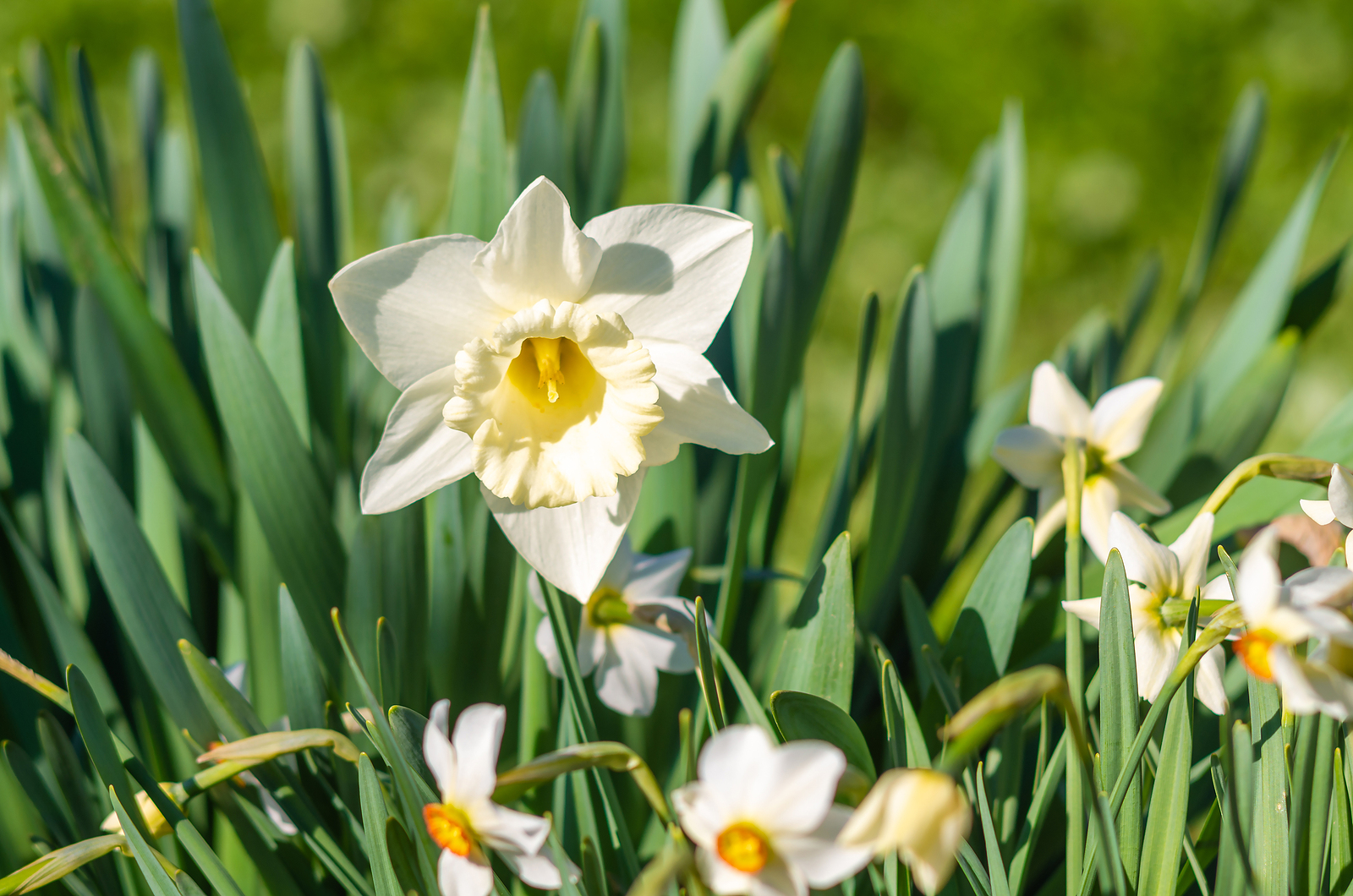 Daffodils, early types (Narcissus spp.). Flowers are yellow or white or with trumpets one color and petals another. Grow 14 to 18 inches tall and 6 to 8 inches wide. Plant in full to partial sun in average garden soil. Plant bulbs 6 to 8 inches deep and 6 inches apart. Plant in groups in shrub or perennial borders or under trees. Popular cultivars include ‘Dutch Master’, ‘King Alfred’, ‘Mount Hood’, and ‘Spellbinder.’ Zones 3-9.
Daffodils, early types (Narcissus spp.). Flowers are yellow or white or with trumpets one color and petals another. Grow 14 to 18 inches tall and 6 to 8 inches wide. Plant in full to partial sun in average garden soil. Plant bulbs 6 to 8 inches deep and 6 inches apart. Plant in groups in shrub or perennial borders or under trees. Popular cultivars include ‘Dutch Master’, ‘King Alfred’, ‘Mount Hood’, and ‘Spellbinder.’ Zones 3-9.
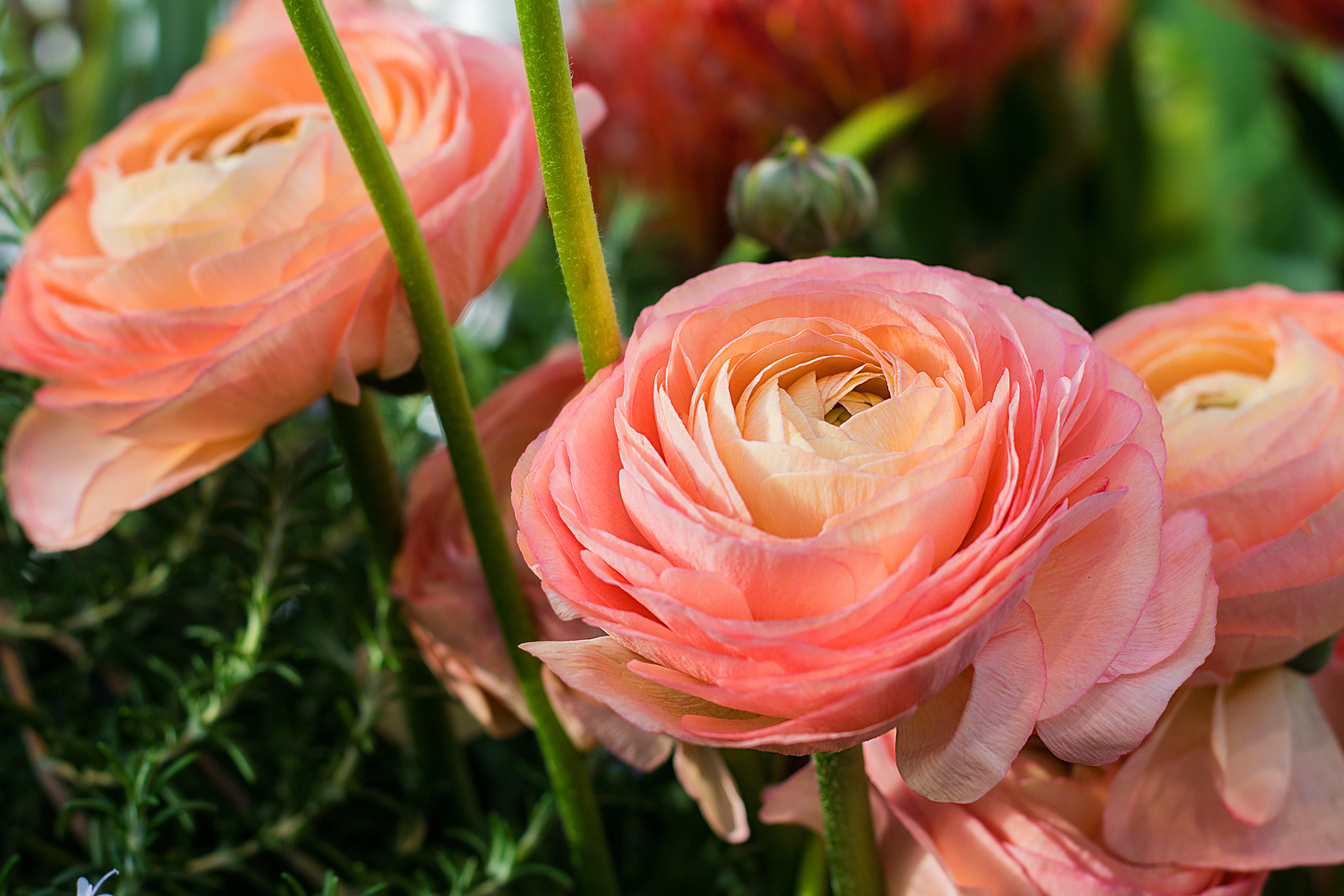 Ranunculus, buttercup (Ranunculus asiaticus). Flowers are mixed shades of white, pink, gold, orange, or crimson. Grows 12 to 18 inches tall and 6 inches wide. Plant in well-drained to sandy soil in full sun. Plant clawlike tubers with claws down, 2 inches deep. Soak tubers overnight before planting. Plant in groups in borders or in rows for cut flowers. Keep roots moist, crown dry. Zones 7-10.
Ranunculus, buttercup (Ranunculus asiaticus). Flowers are mixed shades of white, pink, gold, orange, or crimson. Grows 12 to 18 inches tall and 6 inches wide. Plant in well-drained to sandy soil in full sun. Plant clawlike tubers with claws down, 2 inches deep. Soak tubers overnight before planting. Plant in groups in borders or in rows for cut flowers. Keep roots moist, crown dry. Zones 7-10.
 Snowdrops (Galanthus elwesii–giant snowdrop, G. nivalis—common snowdrop). White flowers with green-tipped inner petals. Grow 4 to 10 inches tall and 4 to 6 inches wide. Plant in regular garden soil in full sun. Plant bulbs 3 to 4 inches deep in early fall. Plant in groups under trees or shrubs or among ground covers and with other small-flowering spring bulbs. Zones 3-7.
Snowdrops (Galanthus elwesii–giant snowdrop, G. nivalis—common snowdrop). White flowers with green-tipped inner petals. Grow 4 to 10 inches tall and 4 to 6 inches wide. Plant in regular garden soil in full sun. Plant bulbs 3 to 4 inches deep in early fall. Plant in groups under trees or shrubs or among ground covers and with other small-flowering spring bulbs. Zones 3-7.
 Squill, spring (Scilla scillioides, S. siberica, S. tubergeniana). Blue or pink flower spikes. Grow 4 to 8 inches tall and 3 to 4 inches wide. Plant in well-drained to sandy soil in full to partial sun. Plant bulbs 4 inches deep in early fall. Plant in informal groups at edges of borders, beneath trees and shrubs, or in short grass. Zones 2-8.
Squill, spring (Scilla scillioides, S. siberica, S. tubergeniana). Blue or pink flower spikes. Grow 4 to 8 inches tall and 3 to 4 inches wide. Plant in well-drained to sandy soil in full to partial sun. Plant bulbs 4 inches deep in early fall. Plant in informal groups at edges of borders, beneath trees and shrubs, or in short grass. Zones 2-8.
Midspring flowering bulbs
These bulbs are hardy. Plant them in late summer or fall. They can remain in the ground through winter.
 Daffodils, mid and late types (Narcissus poeticus, N. triandrus). White or yellow flowers. Grow 10 to 18 inches tall and 6 to 8 inches wide. Plant in humus-rich soil in full to partial sun. Plant bulbs 6 to 8 inches deep and 6 inches apart. Plant in front to midground in a border, woodland, meadow, or rock garden. Zones 3-9.
Daffodils, mid and late types (Narcissus poeticus, N. triandrus). White or yellow flowers. Grow 10 to 18 inches tall and 6 to 8 inches wide. Plant in humus-rich soil in full to partial sun. Plant bulbs 6 to 8 inches deep and 6 inches apart. Plant in front to midground in a border, woodland, meadow, or rock garden. Zones 3-9.
 Fritillary, checkered lily (Fritillaria meleagris). Pure white or purple and white flowers. Grows 12 inches tall and 6 inches wide. Plant in regular garden soil in full or partial sun. Plant bulbs 3 to 4 inches deep. Plant in drifts in rock, meadow, and woodland gardens. Zones 3-8
Fritillary, checkered lily (Fritillaria meleagris). Pure white or purple and white flowers. Grows 12 inches tall and 6 inches wide. Plant in regular garden soil in full or partial sun. Plant bulbs 3 to 4 inches deep. Plant in drifts in rock, meadow, and woodland gardens. Zones 3-8
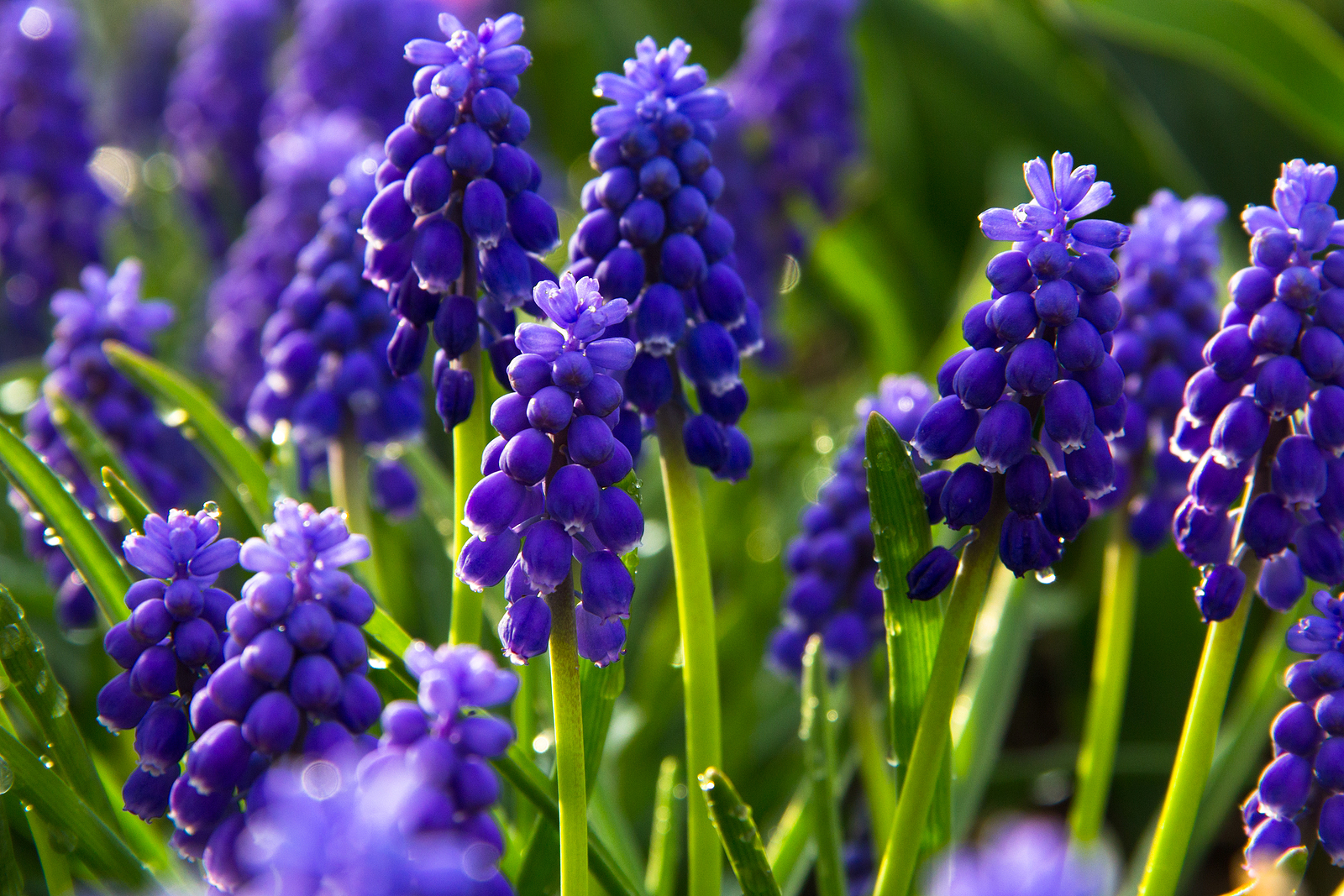 Grape hyacinth (Muscari spp.). Shades of blue flowers. Grow 6 to 8 inches tall and 4 inches wide. Plant in regular garden soil in full sun. Plant bulbs 3 inches deep in early or late fall. Plant in groups for the best effect. Plant in border edging, in woodland, rock, and meadow gardens. Combine with other spring bulbs. Zones 3-8.
Grape hyacinth (Muscari spp.). Shades of blue flowers. Grow 6 to 8 inches tall and 4 inches wide. Plant in regular garden soil in full sun. Plant bulbs 3 inches deep in early or late fall. Plant in groups for the best effect. Plant in border edging, in woodland, rock, and meadow gardens. Combine with other spring bulbs. Zones 3-8.
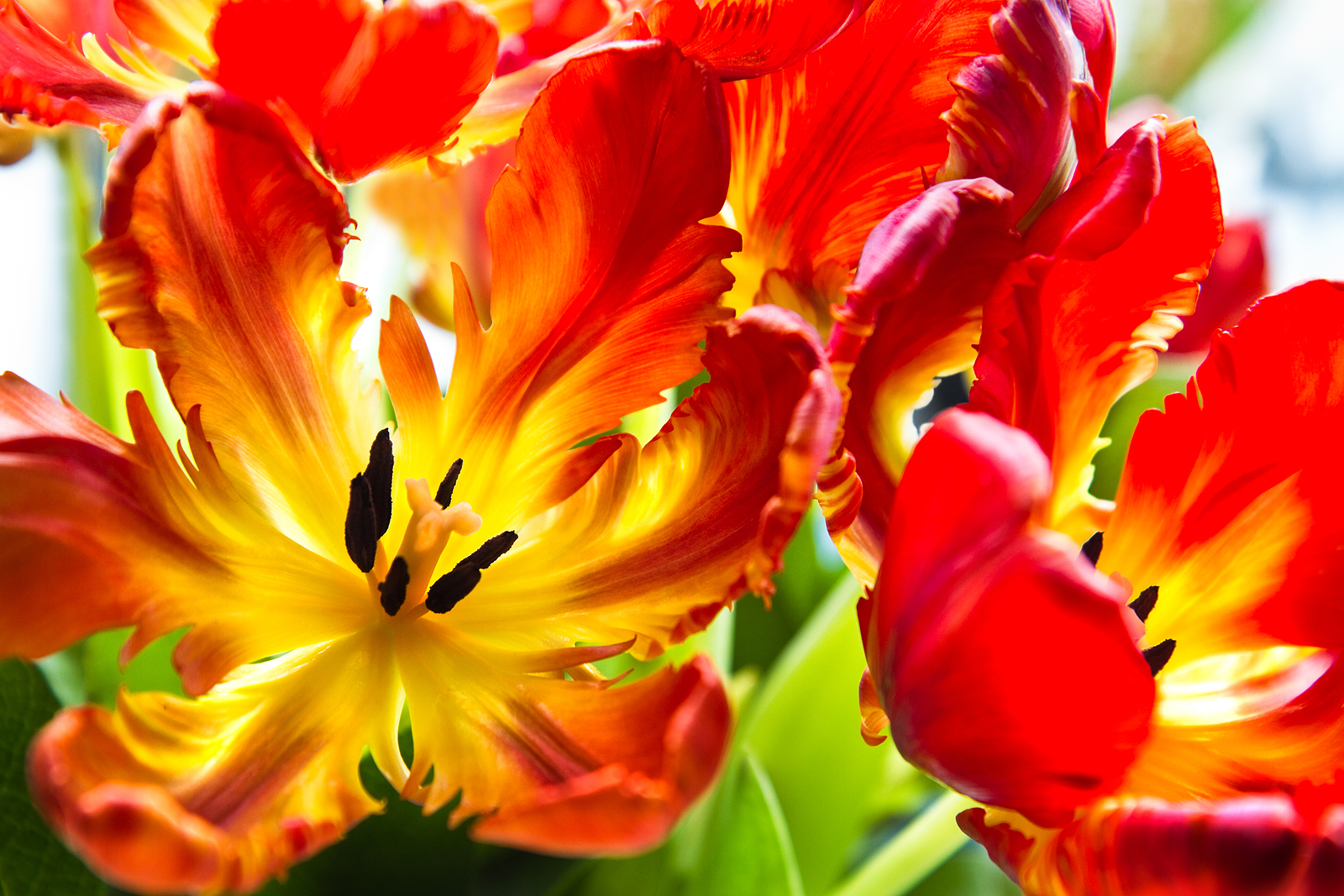 Tulip, midseason types (Parrot, Fosteriana, Greigii types). White, lavender, pink, yellow, orange, red, or bicolored flowers. Grow from 6 to 22 inches tall and 6 to 8 inches wide. Plant in regular garden soil in full sun. Plant bulbs 8 to 10 inches deep in mid to late fall. Plant in groups in the midground of borders and beds; excellent in cut flower gardens. Zones 3-7
Tulip, midseason types (Parrot, Fosteriana, Greigii types). White, lavender, pink, yellow, orange, red, or bicolored flowers. Grow from 6 to 22 inches tall and 6 to 8 inches wide. Plant in regular garden soil in full sun. Plant bulbs 8 to 10 inches deep in mid to late fall. Plant in groups in the midground of borders and beds; excellent in cut flower gardens. Zones 3-7
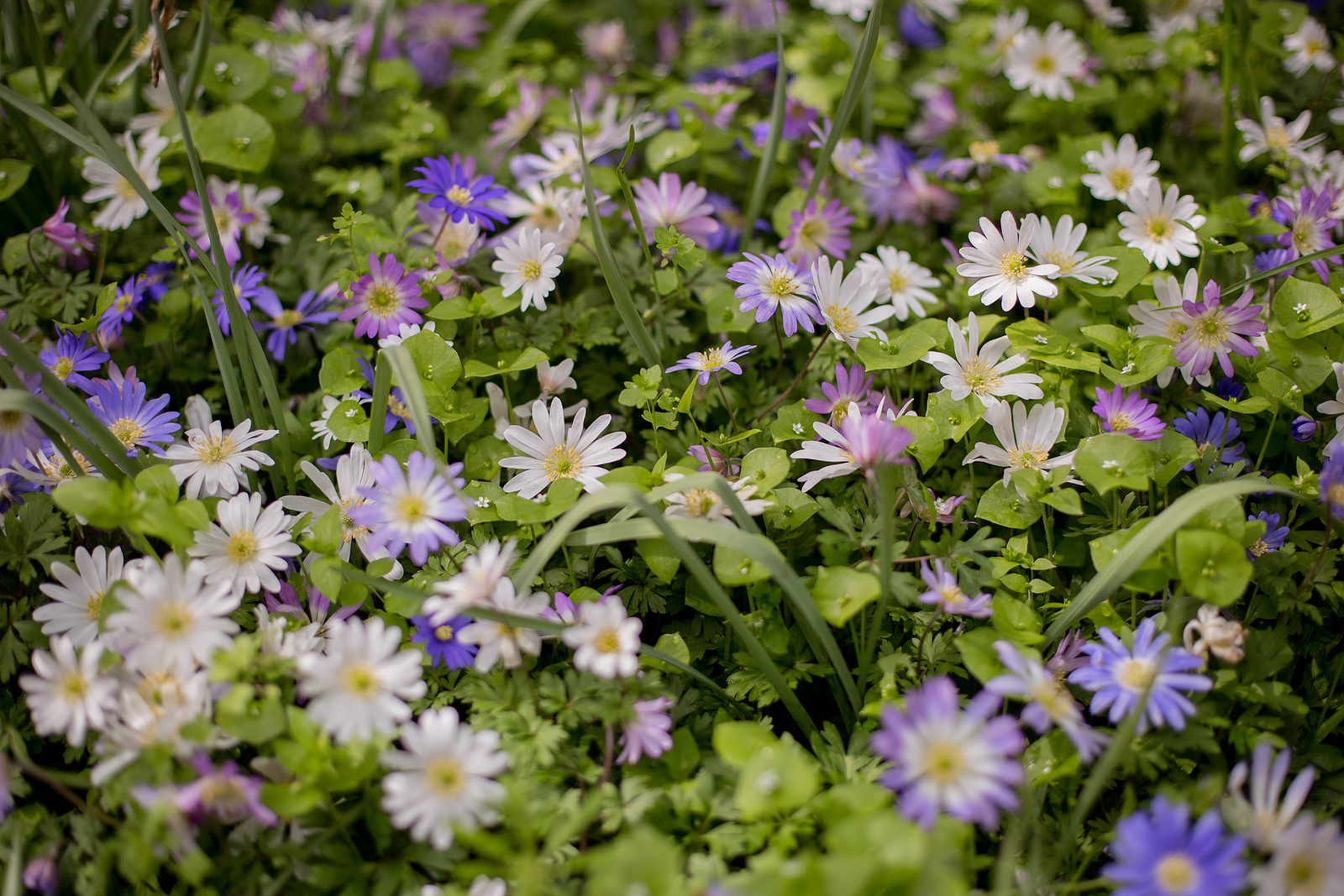 Windflower (Anemone spp.). White as well as many shades of blue and mauve-pink. Grows 6 to 12 inches tall and 6 inches wide. Plant in well-drained sandy soil in full sun to partial sun. Plant tuberous roots 2 to 3 inches deep in early to mid-fall. Plant in small groups in beds, borders, and rock gardens. Varied zones.
Windflower (Anemone spp.). White as well as many shades of blue and mauve-pink. Grows 6 to 12 inches tall and 6 inches wide. Plant in well-drained sandy soil in full sun to partial sun. Plant tuberous roots 2 to 3 inches deep in early to mid-fall. Plant in small groups in beds, borders, and rock gardens. Varied zones.
Late spring flowering bulbs
These bulbs are hardy. They can be planted in late summer or fall. They can remain in the ground through winter.
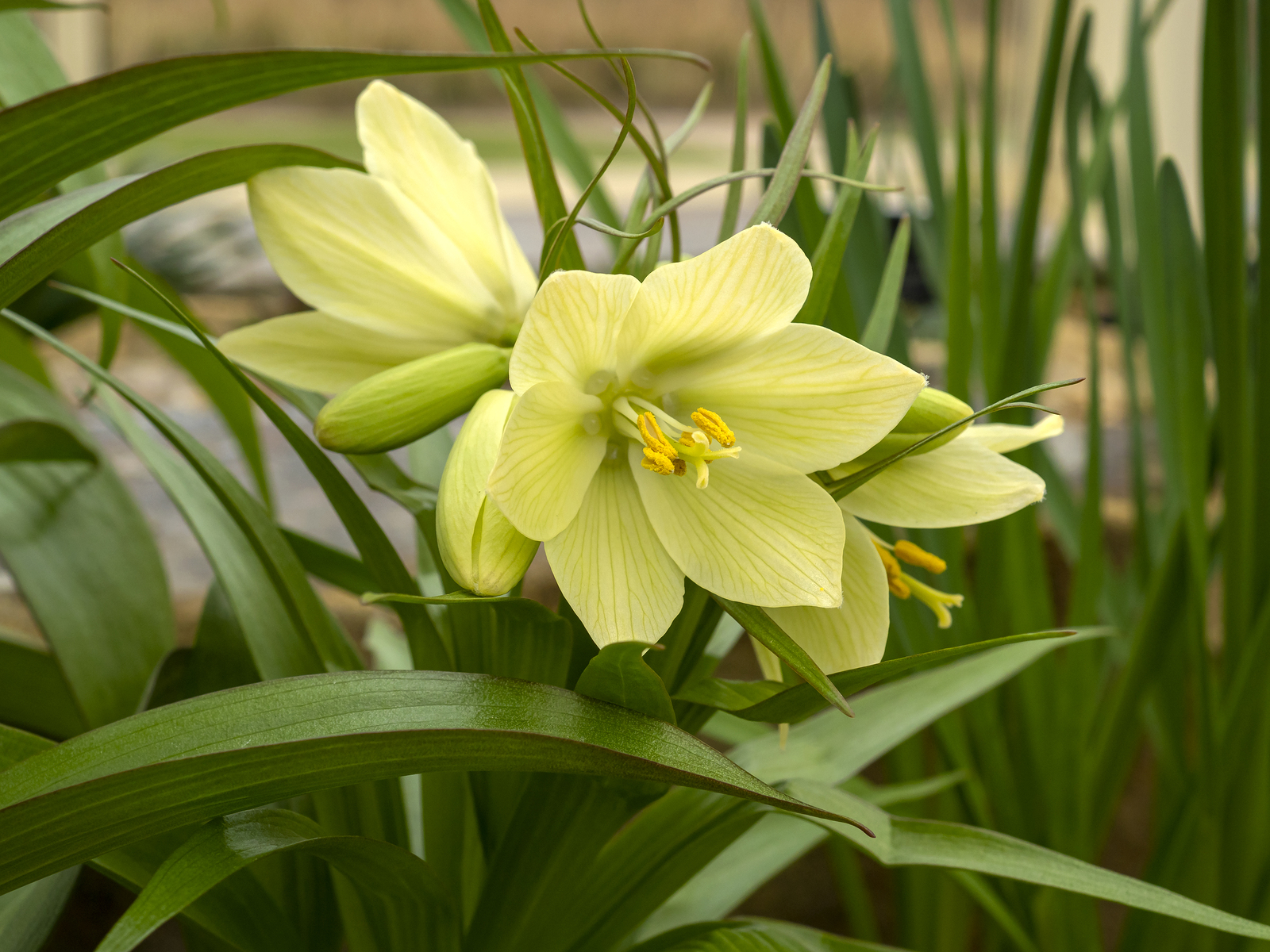 Fritillary, crown imperial (Fritillaria imperialis). Yellow, orange, or red flowers. Grows 2 to 3 feet tall and 9 to 15 inches wide. Plant in regular garden soil in full to partial sun. Plant bulbs on sides 8 inches deep in mid-fall. Plant in groups of a dozen or more to grow out of lower leafy plants such as hostas. Zones 5-8.
Fritillary, crown imperial (Fritillaria imperialis). Yellow, orange, or red flowers. Grows 2 to 3 feet tall and 9 to 15 inches wide. Plant in regular garden soil in full to partial sun. Plant bulbs on sides 8 inches deep in mid-fall. Plant in groups of a dozen or more to grow out of lower leafy plants such as hostas. Zones 5-8.
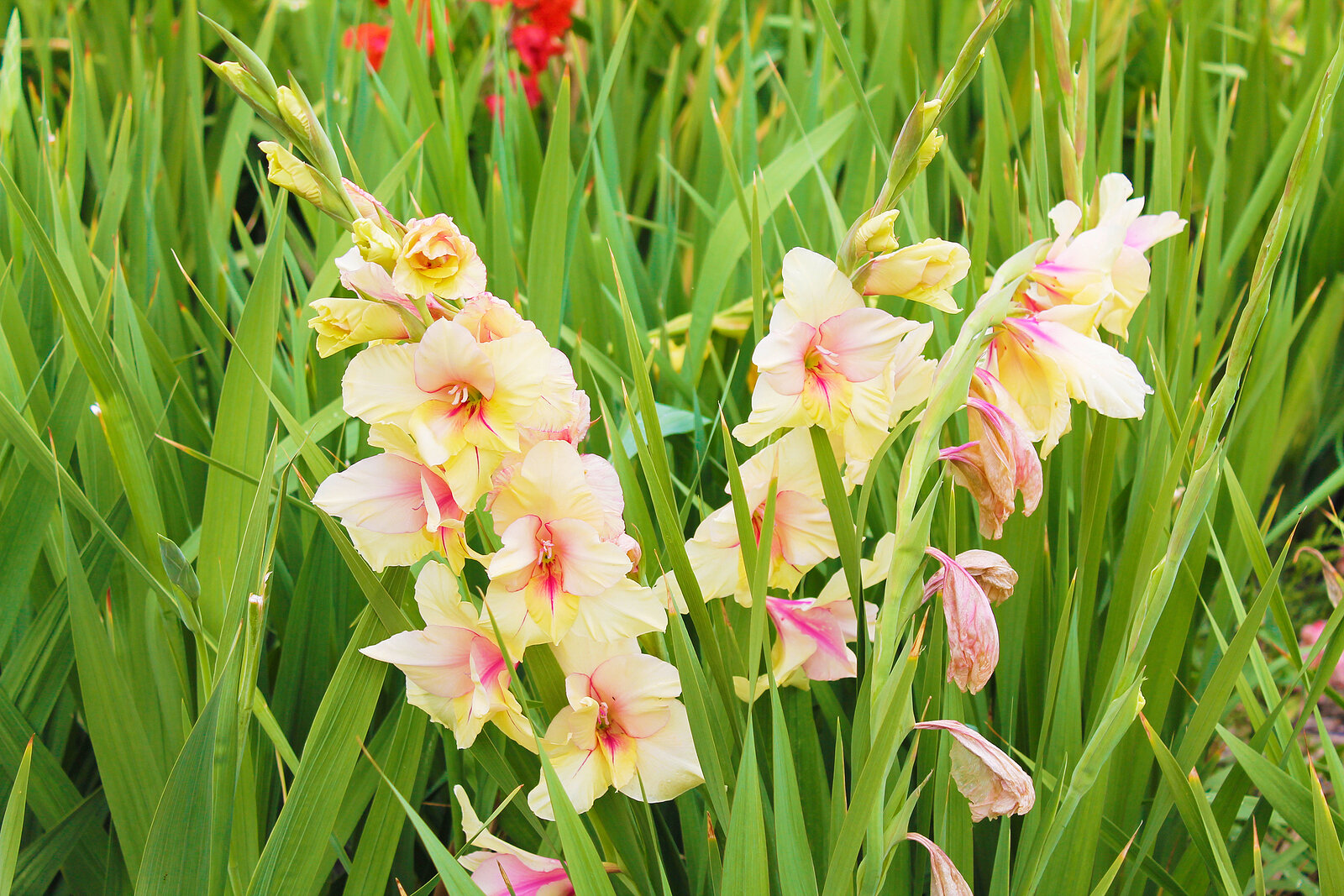 Gladiolus (Gladiolus hybrids). Flowers are white, red, pink, salmon, and bicolors. Grows 18 to 36 inches tall and 6 to 8 inches wide. Plant in regular soil in full sun. Plant 4 to 6 inches deep and 4 to 6 inches apart. For best effect plant in rows or grouped in drifts. Zones 8-11.
Gladiolus (Gladiolus hybrids). Flowers are white, red, pink, salmon, and bicolors. Grows 18 to 36 inches tall and 6 to 8 inches wide. Plant in regular soil in full sun. Plant 4 to 6 inches deep and 4 to 6 inches apart. For best effect plant in rows or grouped in drifts. Zones 8-11.
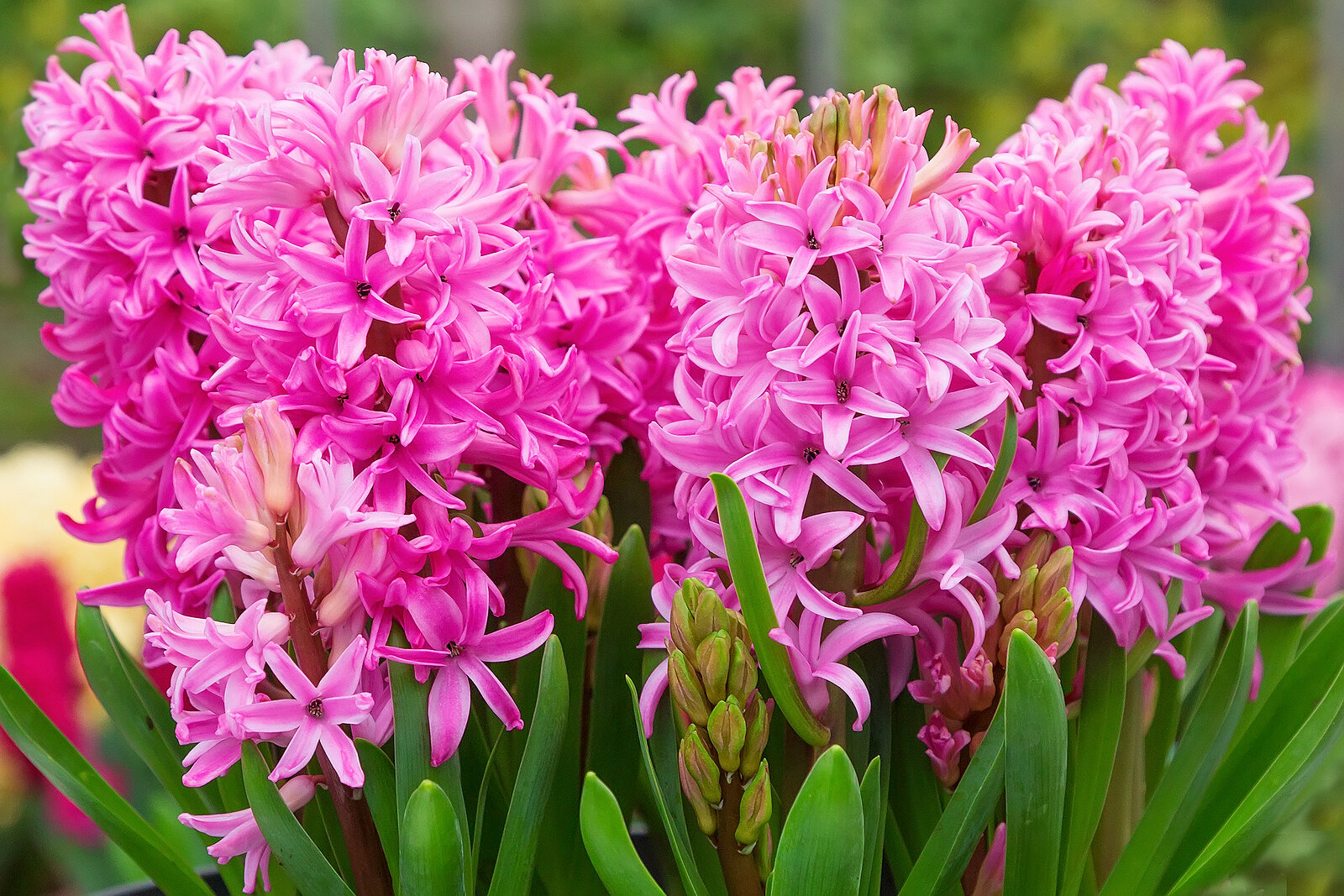 Hyacinth (Hyacinthus orientalis). White, blue, mauve, yellow, pink, red, or orange flowers. Grows 8 to 9 inches tall and 6 to 8 inches apart. Plant in regular garden soil in full sun or partial sun. Plant bulbs 5 to 6 inches deep. Plant in groups; plant where the fragrance can be enjoyed. Zones 3-11.
Hyacinth (Hyacinthus orientalis). White, blue, mauve, yellow, pink, red, or orange flowers. Grows 8 to 9 inches tall and 6 to 8 inches apart. Plant in regular garden soil in full sun or partial sun. Plant bulbs 5 to 6 inches deep. Plant in groups; plant where the fragrance can be enjoyed. Zones 3-11.
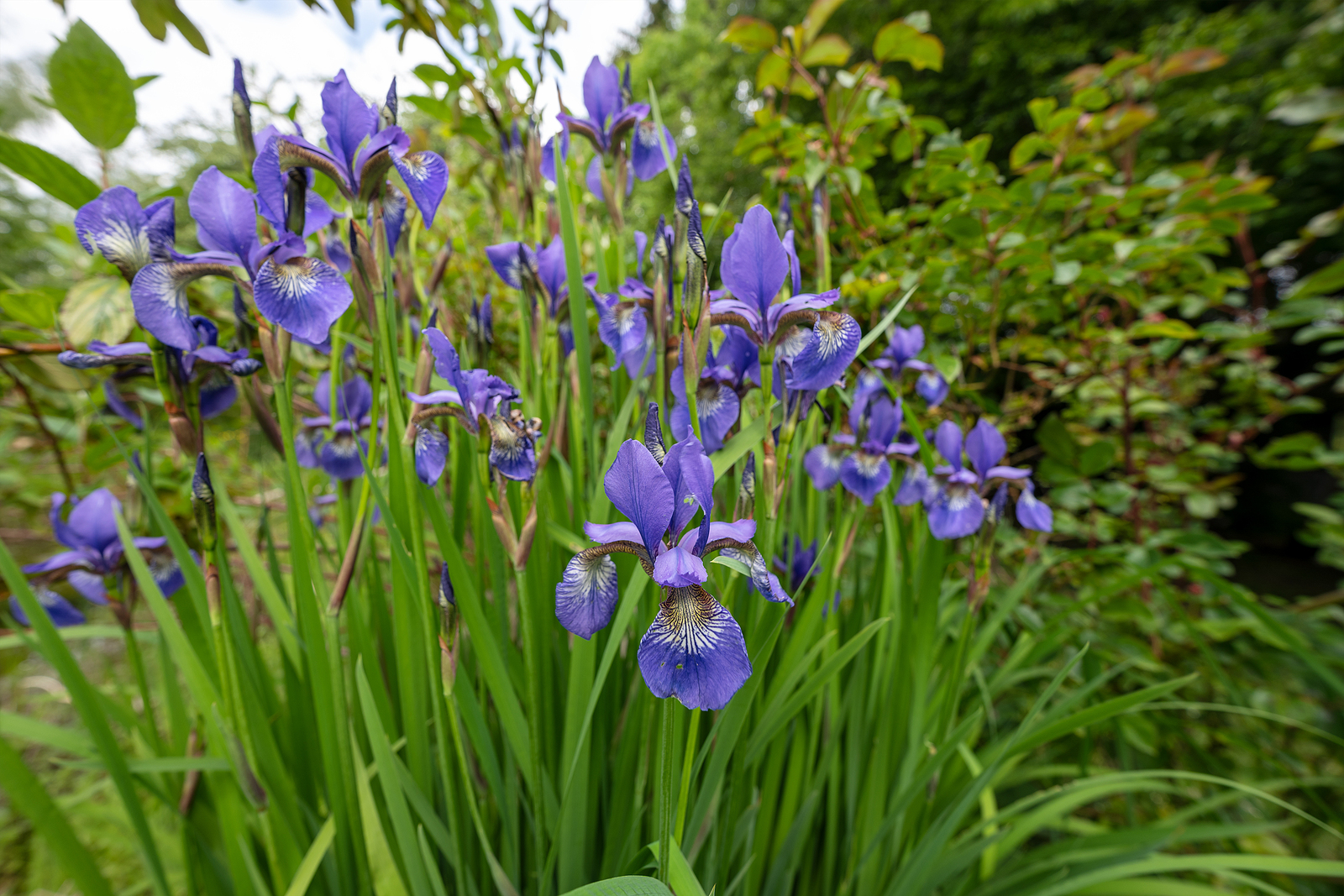 Iris, Dutch iris (Iris x xiphium). Beardless blossoms may be blue, white, yellow, orange, bronze, or bicolor often with contrasting blotches. Grows 18 to 24 inches tall and 12 inches wide. Plant in full sun in humus-rich soil. Plant bulbs 3 to 5 inches deep and 4 to 6 inches apart. Plant in drifts in the midground of borders and in cutting gardens, Zones 6-11.
Iris, Dutch iris (Iris x xiphium). Beardless blossoms may be blue, white, yellow, orange, bronze, or bicolor often with contrasting blotches. Grows 18 to 24 inches tall and 12 inches wide. Plant in full sun in humus-rich soil. Plant bulbs 3 to 5 inches deep and 4 to 6 inches apart. Plant in drifts in the midground of borders and in cutting gardens, Zones 6-11.
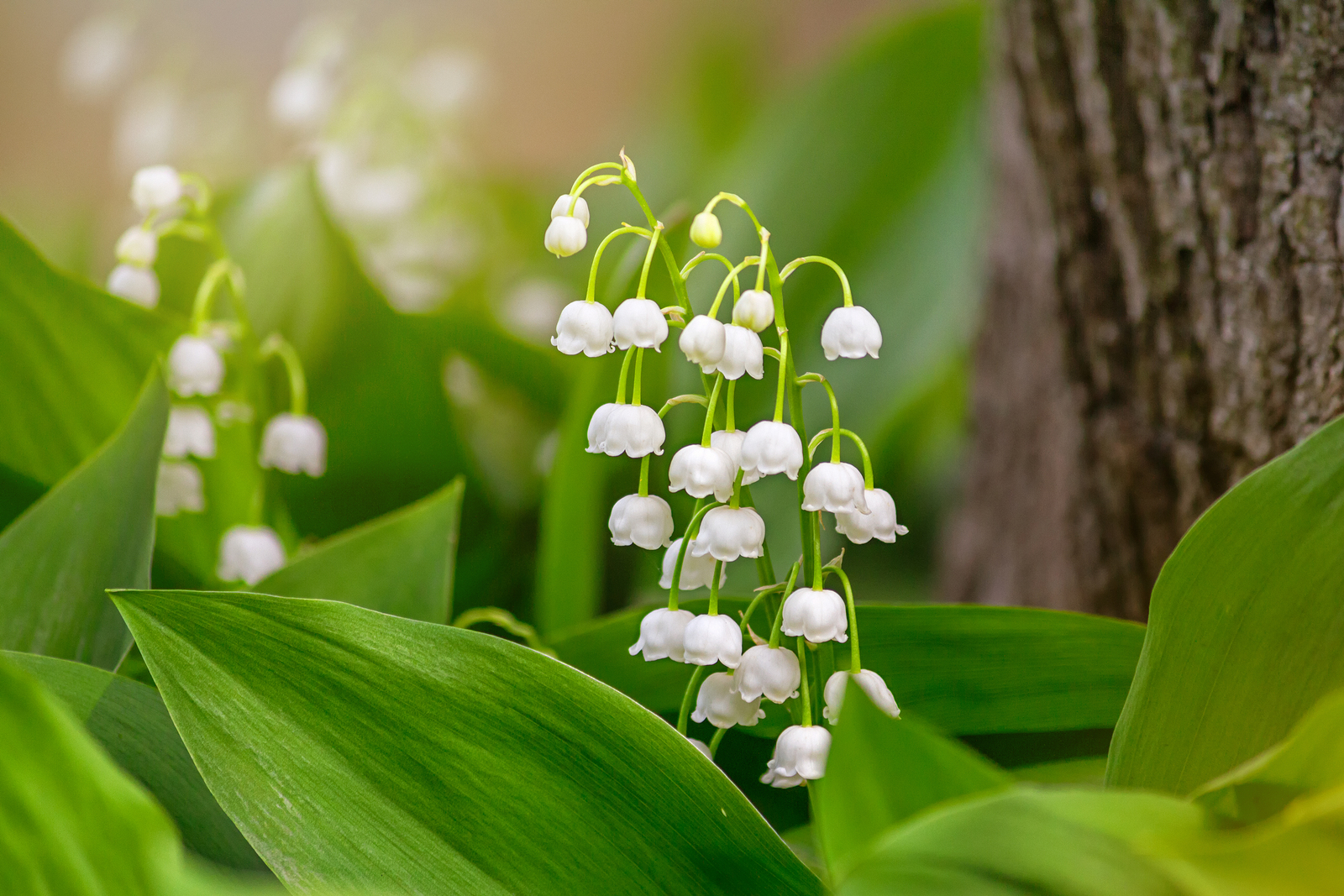 Lily-of-the-valley (Convallaria majalis). Fragrant white or pinkish flowers. Grow 6 to 8 inches tall and spread 12 or more inches. Plant in regular garden soil in shade or partial shade. Plant rhizomes 1 to 2 inches deep and 4 to 6 inches apart; plant in fall. Best as a ground cover under shrubs or in woodland or shade garden. Zones 3-7.
Lily-of-the-valley (Convallaria majalis). Fragrant white or pinkish flowers. Grow 6 to 8 inches tall and spread 12 or more inches. Plant in regular garden soil in shade or partial shade. Plant rhizomes 1 to 2 inches deep and 4 to 6 inches apart; plant in fall. Best as a ground cover under shrubs or in woodland or shade garden. Zones 3-7.
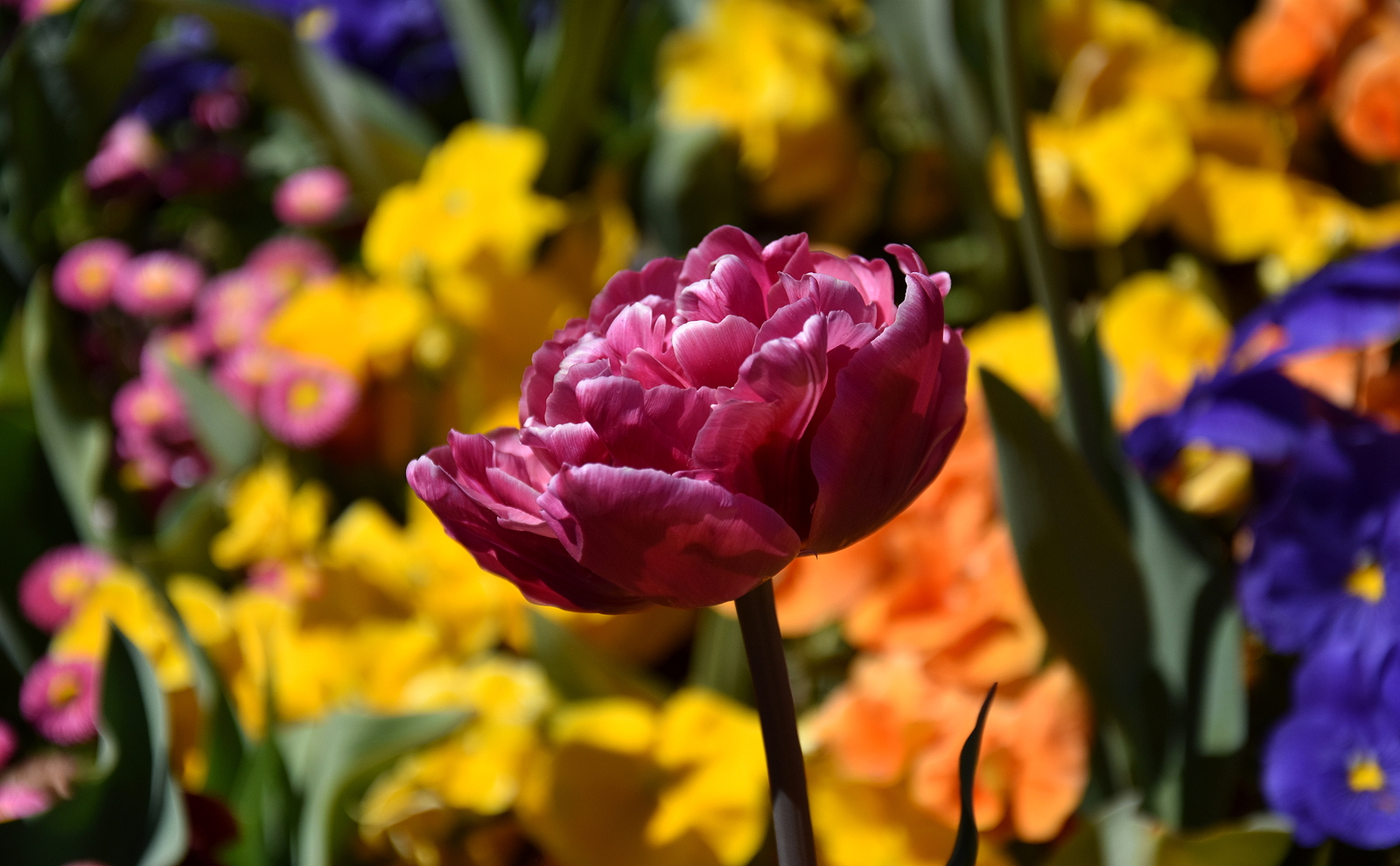 Tulip, late (Double late, Parrot, Greigii types). White, pink, yellow, orange, or red flowers depending on the type. Grow 12 to 14 inches tall and 6 inches wide. Plant regular garden soil in full sun. Plant bulbs 8 to 10 inches deep in mid to late fall. Plant rows or drifts in beds and borders. Zones 3-7.
Tulip, late (Double late, Parrot, Greigii types). White, pink, yellow, orange, or red flowers depending on the type. Grow 12 to 14 inches tall and 6 inches wide. Plant regular garden soil in full sun. Plant bulbs 8 to 10 inches deep in mid to late fall. Plant rows or drifts in beds and borders. Zones 3-7.
Also of interest:

